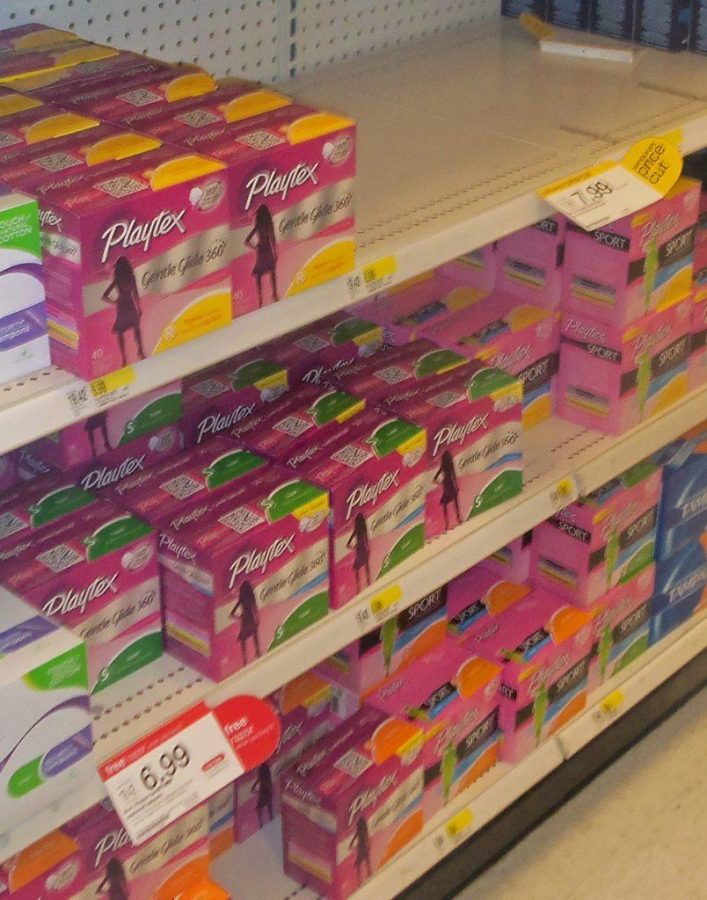Periods are awash in pink, and this is a problem.
From happy, flower-covered tampon packaging to pink polka-dotted cycle trackers, everything period-related is dominated by feminine iconography and language. It is nearly impossible to find a product being promoted without decorations and wording aimed at women. If you do not believe me, head over to your nearest grocery store and take a stroll down the hygiene aisle, or open the app store on your phone and type in “period tracker.” You will find a world flooded with floral prints and fuchsia patterns.
Menstruation is viewed as an issue relevant only to women, but that is simply not true. Not everyone who menstruates is a woman. Periods can be experienced by any gender. There is a big difference between a person’s gender and their sex. According to the American Psychological Association sex refers to biological components such as genitals and organs, whereas gender comes from socially constructed norms about the roles and behaviors of each gender. Biological sex and gender are separate, and biological sex does not determine the gender of a person. In other words, while someone may have certain biological components, they could identify with a different gender.
The distinction between sex and gender means that, regardless of gender identity, people born with ovaries and uteri can experience menstruation. Men, women, non-binary, queer, gender-fluid, etc. can still have periods.
The genderization of menstruation can cause people who have periods but do not identify as women to feel excluded and uncomfortable. No matter what gender someone identifies as, if they menstruate they need access to hygiene and period-related products. For a transperson who has a period, the normalization of periods as an exclusively female experience isolates them and makes them feel unusual or abnormal. If the only products available to them are labeled and decorated for women, this can contribute to feelings of dysphoria and rejection. In essence, limiting discussion of periods only to women alienates a significant portion of menstruators.
In addition to discomfort, genderization of periods can also discourage non-female menstruators from seeking healthcare, assistance or other reproductive rights.
Periods have nothing to do with flowers, the color pink and should not exclusively include feminine design. Simply packaging products in gender-neutral wrappers would be a step in the right direction. Several companies have been started in order to address the issue of gendered period products by offering gender-inclusive alternatives. However, changing the packaging and design of long-standing companies will take time.
While the fight for large-scale change progresses, there are things we can do in everyday life to help others feel less excluded. When talking about menstruation try using gender-inclusive language. Buy from and support companies that provide gender-neutral packaging and design. Above all, make sure that everyone in your life knows you love and support them regardless of genitalia or gender identity.













RJ • Apr 25, 2019 at 3:42 pm
You write that “limiting discussion of periods only to women alienates a significant portion of menstruators.” I think you are referring to at least transgender people here, maybe intersex too? Plus, not all transgender people menstruate. Regardless, the number is maybe close to one percent. I don’t know if that would be high enough for me to call that a “significant portion of menstruators.” Maybe ‘minuscule portion’ would be a more accurate phrase.
The reason that tampons are marketed the way they are is because of the people who purchase them. This is how the free market functions: Companies advertise in a way that they think will maximize profits. Apparently, this means targeting the largest (almost entire) group of consumers who just happen to be women. I think that’s why tampon packaging incorporates fuschia patterns and pink.
Two Scoops, Two Genders • Feb 27, 2018 at 1:14 am
Call me an old soul, but woe to the saints of these latter days!